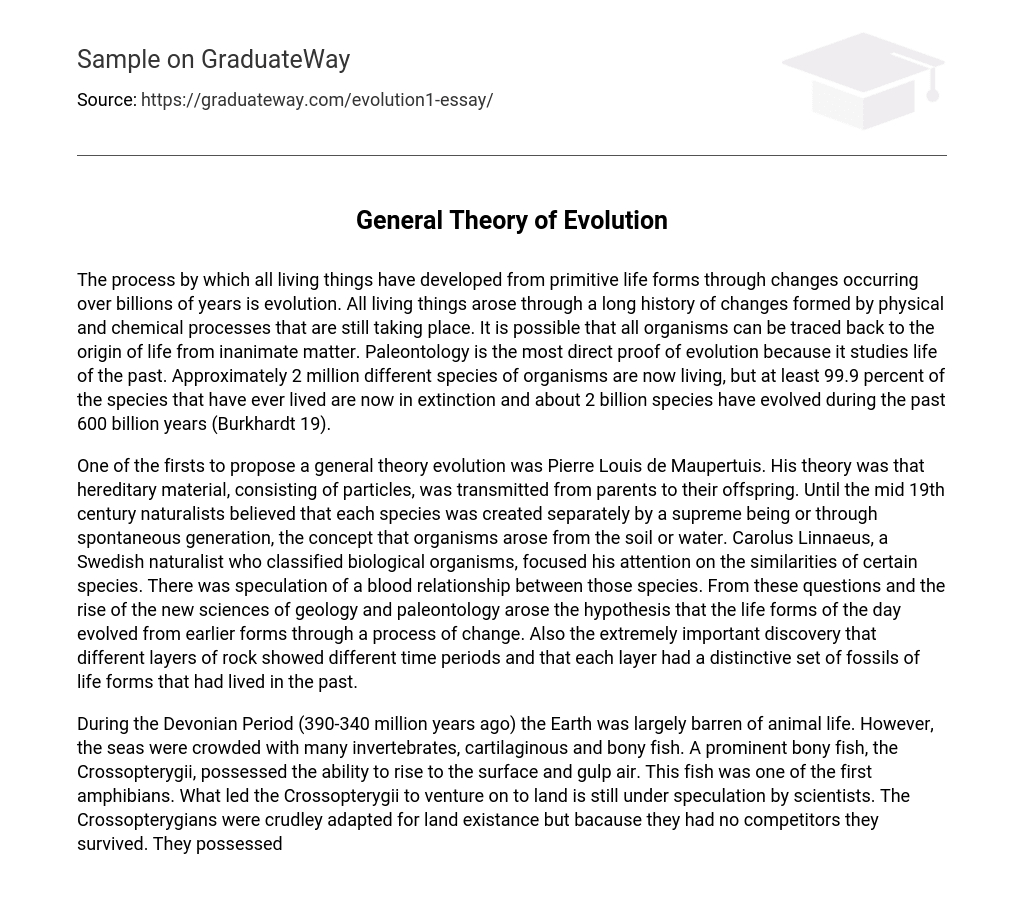The process by which all living things have developed from primitive life forms through changes occurring over billions of years is evolution. All living things arose through a long history of changes formed by physical and chemical processes that are still taking place. It is possible that all organisms can be traced back to the origin of life from inanimate matter. Paleontology is the most direct proof of evolution because it studies life of the past. Approximately 2 million different species of organisms are now living, but at least 99.9 percent of the species that have ever lived are now in extinction and about 2 billion species have evolved during the past 600 billion years (Burkhardt 19).
One of the firsts to propose a general theory evolution was Pierre Louis de Maupertuis. His theory was that hereditary material, consisting of particles, was transmitted from parents to their offspring. Until the mid 19th century naturalists believed that each species was created separately by a supreme being or through spontaneous generation, the concept that organisms arose from the soil or water. Carolus Linnaeus, a Swedish naturalist who classified biological organisms, focused his attention on the similarities of certain species. There was speculation of a blood relationship between those species. From these questions and the rise of the new sciences of geology and paleontology arose the hypothesis that the life forms of the day evolved from earlier forms through a process of change. Also the extremely important discovery that different layers of rock showed different time periods and that each layer had a distinctive set of fossils of life forms that had lived in the past.
During the Devonian Period (390-340 million years ago) the Earth was largely barren of animal life. However, the seas were crowded with many invertebrates, cartilaginous and bony fish. A prominent bony fish, the Crossopterygii, possessed the ability to rise to the surface and gulp air. This fish was one of the first amphibians. What led the Crossopterygii to venture on to land is still under speculation by scientists. The Crossopterygians were crudley adapted for land existance but bacause they had no competitors they survived. They possessed





